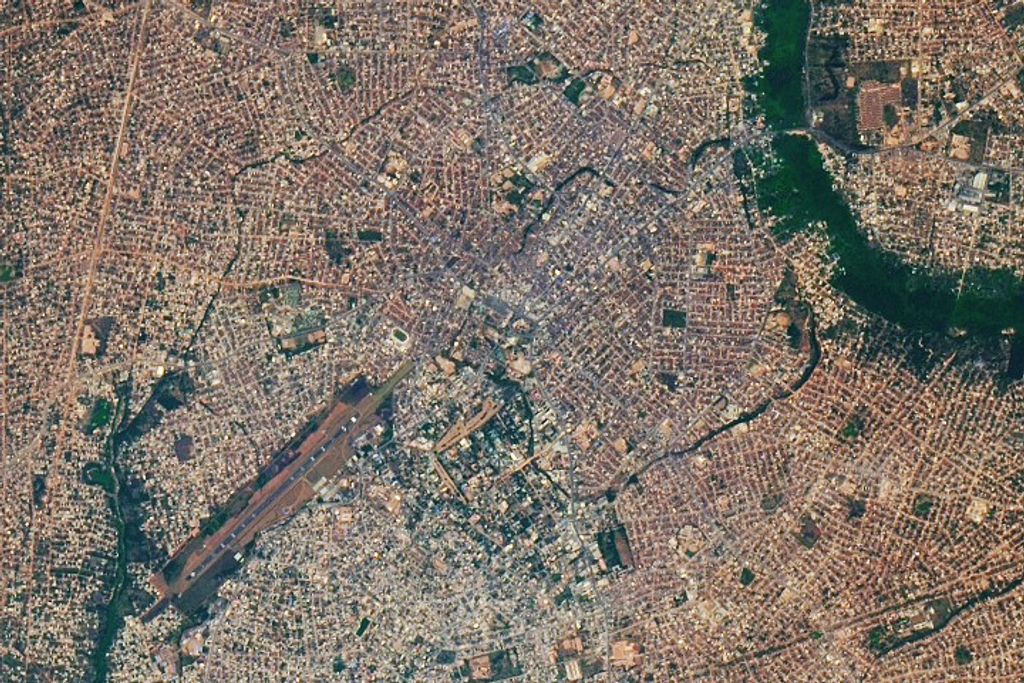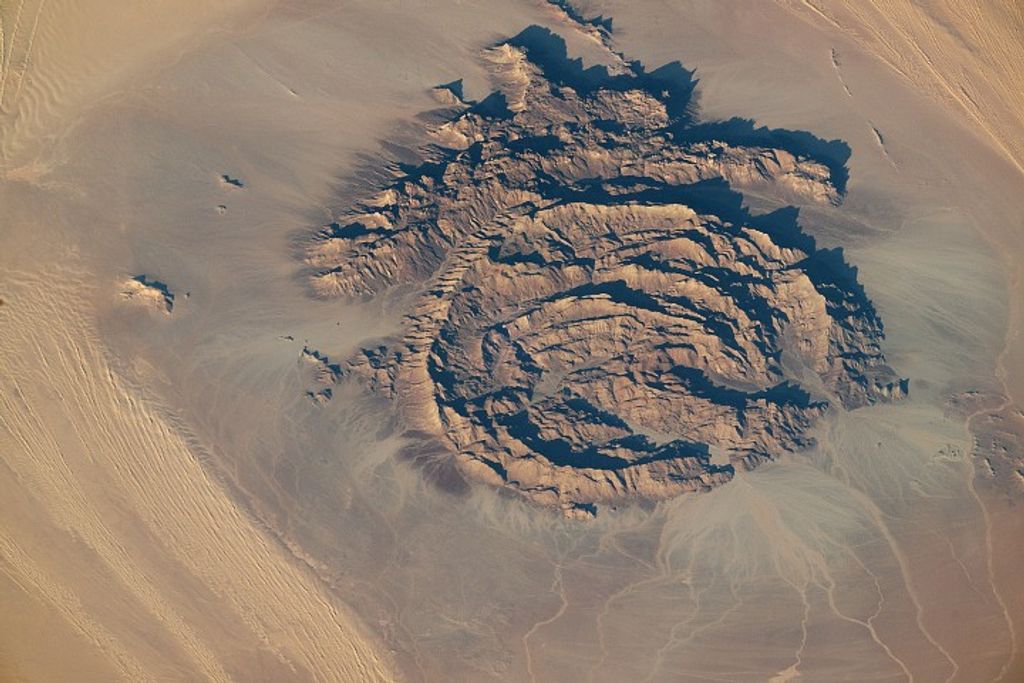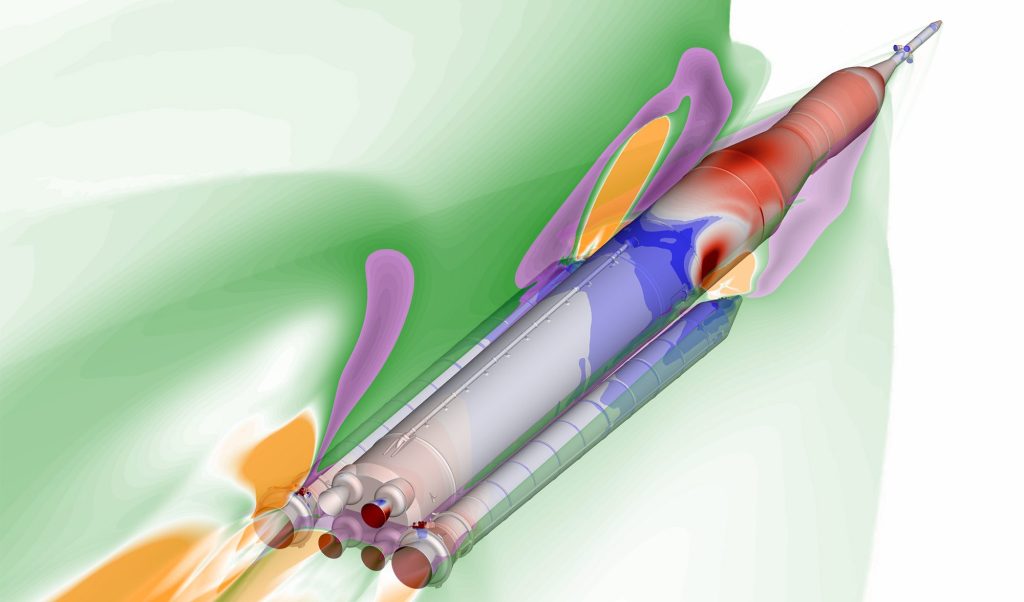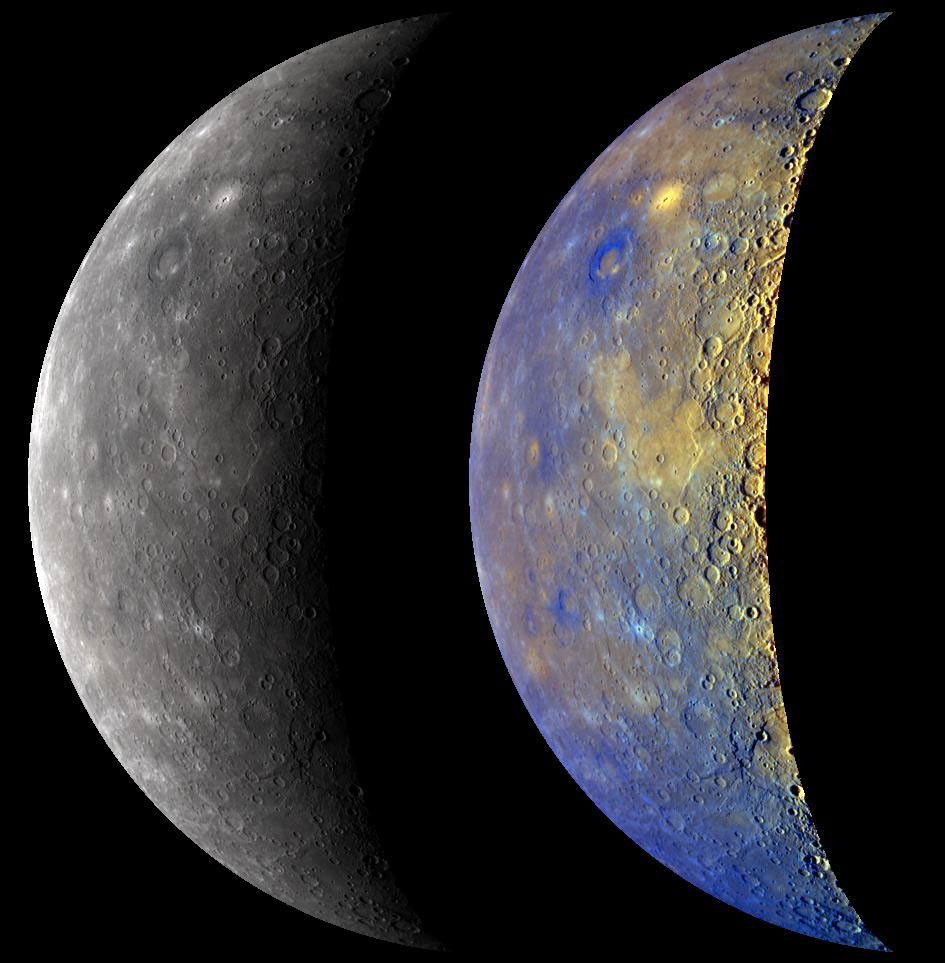Description
During MESSENGER's third Mercury flyby, the WAC captured images through all 11 of its narrow-band color filters. The image on the left is not black and white but rather was produced by using three of the WAC filters (centered at 480, 560, and 630 nanometer wavelengths) to create an approximation of how Mercury's true color might appear to a human eye. In contrast, the brightly colored view of Mercury on the right was created by utilizing the information gathered by all 11 of the WAC filters and applying statistical methods that accentuate the subtle color differences on Mercury's surface. A similar true and enhanced-color view was created after MESSENGER's second Mercury flyby. A previously released high-resolution color image of a portion of the northern mid-latitude region shows in more detail a double-ring basin that is dark blue in the right view and a neighboring bright yellow, irregularly shaped depression.
Date Acquired: September 29, 2009
Image Mission Elapsed Time (MET): 162741039 - 162741079
Instrument: Wide Angle Camera (WAC) of the Mercury Dual Imaging System (MDIS)
Resolution: 5 kilometers/pixel (3 miles/pixel)
Scale: Mercury's diameter is 4880 kilometers (3030 miles)
Spacecraft Altitude: 16,300 kilometers (10,100 miles)
These images are from MESSENGER, a NASA Discovery mission to conduct the first orbital study of the innermost planet, Mercury. For information regarding the use of images, see the MESSENGER image use policy.































